Dr Fumiya Iida, Department of Engineering
Research Overview
The research interests of the Bio-Inspired Robotics Lab lie at the intersection of robotics and biology. Through abstraction of the design principles of biological systems, we develop core competences which are the design and control of dynamic mechatronic systems, bionic sensor and actuator technologies, and computational optimization techniques. Our main goals are to contribute to a deeper understanding of adaptivity and autonomy of animals through the investigation of dynamic robots, and to engineer novel robotic applications which are more adaptive, maneuverable, resilient, and energy efficient. Currently our research focus is centered around "modeling of biological systems" (mathematical formulations of animals' adaptive behaviors), "self-organization" (mechanisms to generate structures and patterns), and "component development" (development of unconventional enabling technologies such as sensors, motors, computation algorithms and assembling technologies). By understanding the basic design principles of these technological components, we aim to deepen our understanding of self-organization processes of intelligent adaptive behaviors in animals and machines.
Ongoing Research Areas
Previous Projects
| Large-Payload Climbing Robots for Complex Vertical Environments |
|
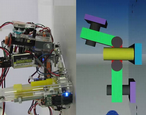 |
Description: Robotic climbing in complex vertical environments has been a challenge, especially when the irregularity in the environment is with a close dimension to a robot itself. The project proposed a robotic climbing technology based on thermoplastic adhesives, with whom a physical process of thermal bonding helps increase the adhesion strength, and whose rheological property enables conforming to large-scale irregularities in complex environments. Researchers: Liyu Wang, Fumiya Iida BSc and MSc students: Lina Graber, Remo Bernet, Fabian Neuschaffer, Marc Osswald Publications: IEEE-TRO, RAS, IROS 2011, ICRA 2012, IROS 2012; Media coverage: New Scientist, UPI News, Discovery Channel, Focus Magazine, IEEE Spectrum Videos: A flat surface, complex environments, a large payload |
| MR ESS (Energetically Self Sufficient) |
|
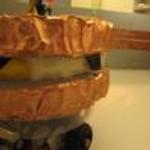 |
Description: Autonomous mobile robots must be able to deal with the various uncertainties that emerge from the interaction with the real world. Thus the estimation of unmeasurable state variables from measurable ones, is a required cognitive process that permits adaptive robots to successfully overcome the various challenging problems derived. This project aims at finding the binding between the physical and the mental simulation dynamics. Was named mental simulation the from us developed computational strategy. Researchers: Liyu Wang, Fumiya Iida BSc and MSc students: Kevin Frey, Rohit Vaish, Cristian Montillo Media coverage: NZZ Campus Magazine Videos: Q Learning, 'Mental Simulation' |
| Simulation of Multi-Mode Linear Actuator (MMLA) |
|
 |
Description: Legged locomotion on rough terrain is a demanding task which requires both the mechanical design and the control of a system to be versatile and adaptive. Based on a prototype of a Multi-Mode Linear Actuator (MMLA), this project aims at developing a model-based predictive control algorithm which enables the MMLA to cope with different ground references such as stairs, hurdles and pitfalls. [Video] |
| Self-Sufficient Legged Robot in Uncertain Environment |
|
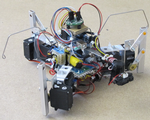 |
Description: Previous projects on self-sufficient mobile robots have shown that dealing with uncertainties of the real world is a challenging problem. This project focuses on efficient approaches applicable in real world scenarios with the objective of finding practical behavior to cope with uncertainties where classical approaches such as simulations fail. In a first step a simple self-modeling approach has been used to find gait patterns for forward locomotion and rotation. Augmentation of two cheap sensors - a proximity and beacon sensor - have shown satisfactory navigation behavior towards the charging station in a simple environment. Videos Learning: [low - high] Navigation: [low] |
| Compass Gait Robot Locomotion in Rough Terrain |
|
 |
Description: The challenge of this project is to develop a controller with which the compass gait robot can walk through a series of steps and gaps on the ground. [video] (Massachusetts Institute of Technology, USA) |
| Optimization of Motor Control in Underactuated Legged Locomotion |
|
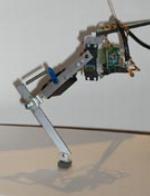 |
Description: This project investigates mechanical designs and optimization processes of legged robot systems, which can traverse rough terrains. [video] (Massachusetts Institute of Technology, USA) |
| Human-like biped locomotion |
|
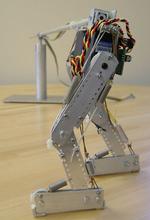 |
Description: This project explores the underlying mechanisms of human locomotion by using a biped robot with compliant legs. [video] (University of Jena, Germany) (Funded by the German Research Foundation (DFG, SE1042)) |
| Sensing through body dynamics |
|
 |
Description: The use of body dynamics can be used for the perception of sensory systems. We challenging how the perception, control, and body dynamics are related each other [video] (University of Zurich, Switzerland) (Funded by the Swiss National Science Foundation, Grant No. 200021-109210/1) |
| "Cheap" underwater locomotion |
|
 |
Description: Material properties of body influence significantly underwater for the purpose of locomotion. In this project, we investigate how much behavioral diversity can be achieved through the minimum control and actuation. [video] (University of Zurich, Switzerland) (Funded by the Swiss National Science Foundation, Grant No. 200021-109210/1) |
| Puppy: Cheap rapid legged locomotion |
|
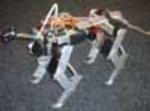 |
Description: This project investigates musculoskeletal models for rapid four-legged locomotion. The coordination of rigid and elastic structures results in a form of running behavior with simple control architecture. [video] (University of Zurich, Switzerland) (Funded by the Swiss National Science Foundation, Grant No. 200021-109210/1) |
| Stumpy: Pendulum driven hopping machines |
|
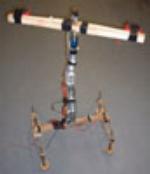 |
Description: By considering morphological properties, we show that human-like behavioral diversity can be achieved only with simple control and actuation. [video] (University of Zurich, Switzerland) |
| Biological inspired 3D visual navigation |
|
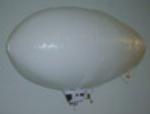 |
Description: Bees have sophisticated visual sensory systems for the purpose of navigation. By using an omni-directional vision which reproduces the perspective of animals, we attempt to model the cognitive function which enables the learning process of navigation. (University of Zurich, Switzerland) (Funded by the Swiss National Science Foundation, Grant No 2000-061372.00) |
| Active non-verbal interaction of Face Robot |
|
 |
Description: Face Robot is capable of exhibiting a variety of facial expression by using the artificial muscles. We investigate how the non-verbal communication between human and machine can be possible through facial expression. (Science University of Tokyo, Japan) |
- * Fumiya Iida
- Computer Vision & Robotics Group
- Overview
- Members
- Research
- Teaching
- Publications
- Events and Seminars
- 4th Year Projects
- Postgraduate Applications
- Contact
- Machine Intelligence Homepage
